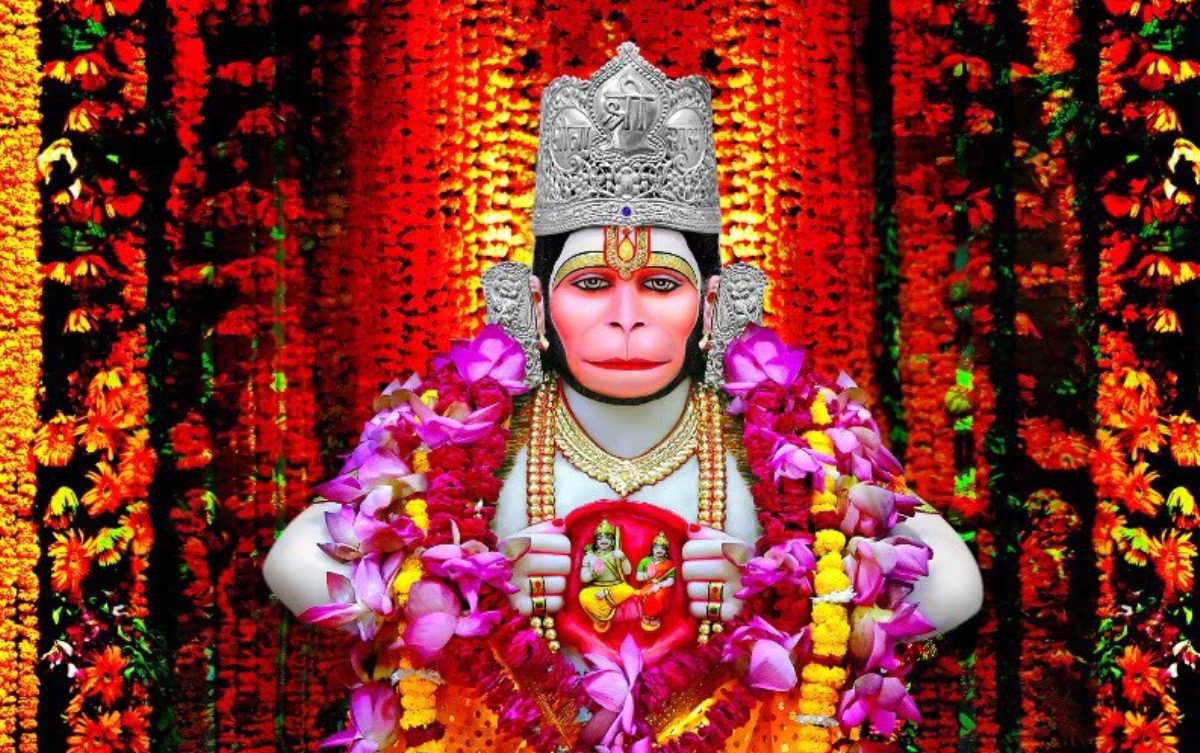Long queues at Hanuman temples, festive fervor in full swing
Lucknow – The spiritual energy across Uttar Pradesh reached its crescendo today as devotees thronged Hanuman temples on the fifth and final Bada Mangal of the Jyestha month. From cities to small towns, scenes of deep devotion, chanting, and large-scale offerings marked this auspicious Tuesday, especially at the renowned Hanuman Garhi Temple in Jamoon ke Gaura, Amethi, where long queues of worshippers were seen from early morning.
The atmosphere in temple premises across the state echoed with the powerful chants of “Sankat kate mite sab peera, jo sumire Hanuman Balbeera” and the resonating cries of “Jai Shri Ram” and “Jai Hanuman.” Faithful devotees, dressed in saffron and red, queued patiently to seek blessings from the ardent devotee of Lord Ram, believing that Hanuman’s darshan removes all suffering.
In various towns, devotees also set up stalls at intersections and marketplaces, distributing prasada, boondi laddoos, and other sacred offerings. Community bhandaras (mass food offerings) were organized with enthusiastic participation, reinforcing the sense of service and brotherhood.
At Hanuman Garhi, the crowd surged throughout the day, transforming the temple grounds into a spiritual fair. From performing aarti and archana, to offering sindoor mixed with ghee or jasmine oil — a tradition sacred to Tuesdays in Jyestha — devotees followed every ritual meticulously. The temple management, supported by local police, implemented traffic diversions and enhanced security measures to manage the crowd.

Speaking to The Lucknow Tribune, a devotee said, “Darshan of Hanuman ji on Bada Mangal is not just about faith, it brings peace. We believe all our pain and troubles dissolve in his presence.”
Shops selling sweets, flowers, sindoor, and puja material did brisk business throughout the day. The spiritual significance of Bada Mangal lies in the belief that worshipping Hanuman on Tuesdays in Jyestha yields special blessings. Scriptures advise offering chana-gud (gram and jaggery), paan, cloves, and a red flag or cloth to Lord Hanuman, along with chanting Lord Ram’s name — considered the most beloved act for the divine messenger.
Devotees also offered Tulsi leaves, or peepal and banyan leaves inscribed with “Ram” — as a symbolic prayer for fulfillment of desires.
As dusk approached, temple bells rang louder, flames of aarti lit up the sanctums, and the collective devotion of thousands painted a divine picture — reaffirming that Bada Mangal is not just a tradition, but a living celebration of devotion, unity, and spiritual faith in Uttar Pradesh.





